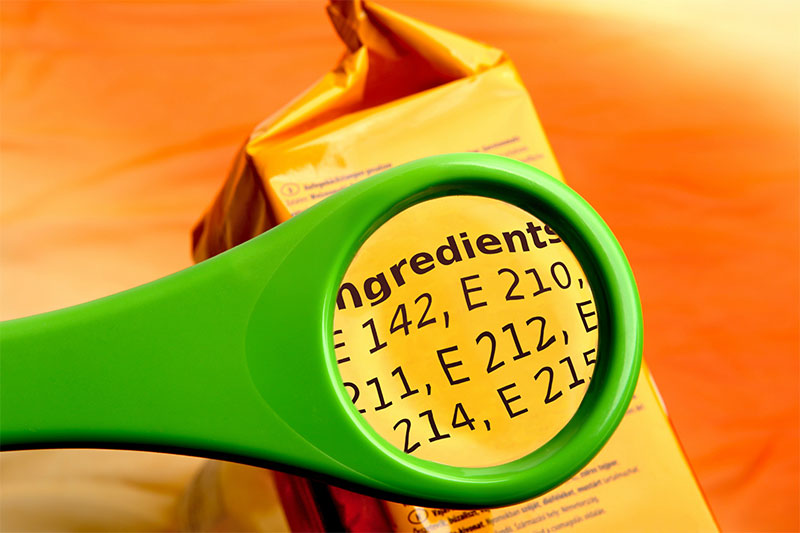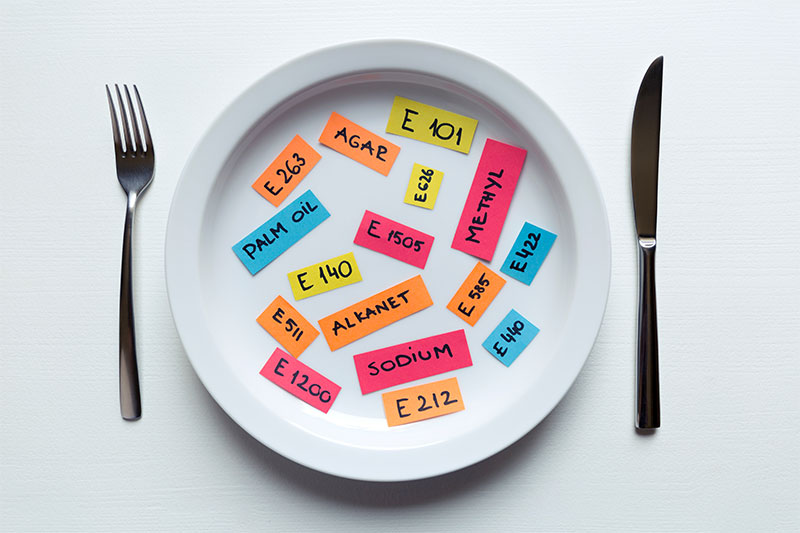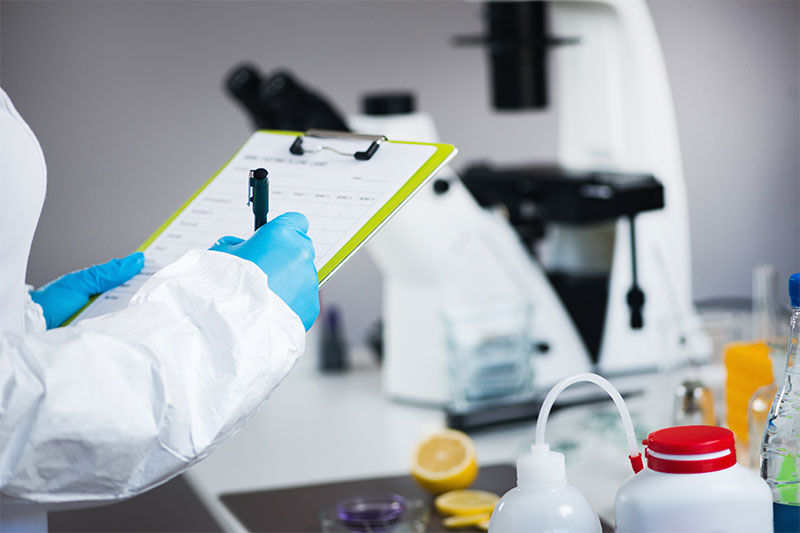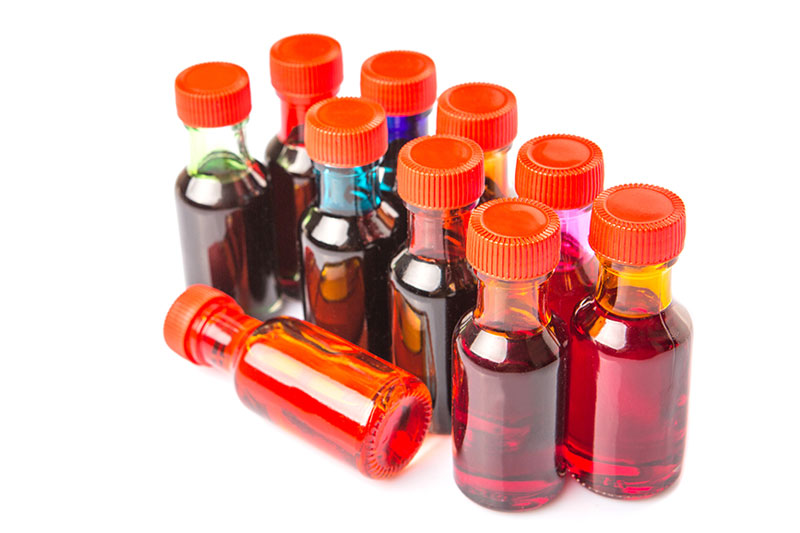Food additives are everywhere. Unless you only eat raw, organic produce, they’re most likely lurking in your pantry, refrigerator, and anywhere else you have processed foods.

More than 3,000 additives are added to foods in the United States. They are the product of invention and progress in the food industry, but in some instances, food additives can be harmful to your health. Many food additives are human-made ingredients that may not be safe for consumption. Many of them have been studied and linked to various health concerns, including cancer and other diseases.
Knowing what to look for and avoid the next time you’re at the grocery can do wonders for your well-being.
What are food additives?

Food additives are substances that become part of a food product during the processing or creation of that food. Food additives can be either natural or human-made. Some natural additives include herbs or spices for flavor, vinegar to pickle foods, and salt to preserve meats.
They are used for various reasons and serve different functions. Food additives are added to help process or prepare food, add nutrients, help keep a product fresh or make something look or taste more appealing.
The various functions of food additives

- Give food a smooth and consistent texture by acting as an emulsifying agent or stabilizer
- Maintain the wholesomeness of food by acting as a preservative and reducing the spoilage that air, fungi, and bacteria can cause
- Control the acid-base balance of food to achieve a certain flavor or color
- Act as a leavening agent that releases acids that react with baking soda when heated to help biscuits, cakes and other baked goods rise
- Most of the concern with food additives is with human-made ingredients that are added to foods.
GRAS list

The U.S. Food and Drug Administration (FDA) has a list of food additives that are considered safe. However, many of them have not been tested. They are considered safe by most scientists and put on the “generally recognized as safe (GRAS)” list. This list contains more than 700 items.
Substances that are harmful to people or animals may knowingly still be allowed as food additives, but only at the level of 1/100th of the amount, this is considered toxic. This is especially important to know for people who have food allergies or sensitivities. A hidden food additive could be the source of your unwanted symptoms or reactions.
Another thing to note is that the GRAS list and process is voluntary and self-regulated. This means that if a company wants to add a new additive to their foods, they can hire experts or a consulting firm to deem the new additive “safe.” The FDA doesn’t have to be notified.
The good news is that if you take the time to read product labels and know what to look for, you can avoid food additives and any potential risks they may have.
Food additives to avoid
1. Sodium Nitrite: Most commonly added to bacon, ham, hot dogs, sandwich meats, and smoked fish. This has been linked to cancer.
2. Artificial sweeteners (Aspartame and Acesulfame-K): Found in products including diet sodas, some baked goods, NutraSweet, and Equal. Aspartame has been linked to various adverse side effects. Acesulfame-K has been linked to kidney tumors. Both of these sweeteners are known to be carcinogenic.
3. High fructose corn syrup: This is found in almost everything from ketchup to bread and can increase your LDL “bad” cholesterol levels and contribute to diabetes. Don’t forget to read: 10 Reasons Why High Fructose Corn Syrup is Dangerous for Your Health
4. BHA (butylated hydroxyanisole) and BHT (butylated hydroxytoluene): This is added to cereal, gum, potato chips and vegetable oils. Both of these have been linked to cancer.
5. Monosodium Glutamate (MSG): A flavor enhancer and excitotoxin, a substance that overexcites cells to the point of damage or death.
6. Trans Fat: Studies have linked this additive to heart disease, strokes, and kidney problems. This additive has already been removed from many foods.
7. Food Dyes: Artificial color is found in many snack foods and juices. Studies have shown that food dyes may contribute to behavioral problems in children and can even lead to a reduction in IQ.

8. Olestra: Remember those “good-for-you” potato chips? That was Olestra talking. Olestra was used to help stop fat from being absorbed in the digestive system, but it also blocks vitamins and other nutrients from being absorbed.
9. Phthalates: This synthetic hormone is found in many canned foods and personal care products. Phthalate has been linked to hormone disruption in animals and some human studies. Labs tests on animals have been linked to reproductive and neurological damage.
10. Potassium bromate: This is sometimes added to white flour, bread, and rolls to increase the volume of products. However, it has cancer-causing properties that have influenced some states in America to require a label stating this risk.

The choice is yours the next time you go grocery shopping. Examining every label takes a little extra time, but it’s worth it. The frustrating part is that a lot of everyday foods have many of the above-listed additives in them.
To jump-start your hunt for healthy food items, try shopping at local farmer’s markets or grocery stores are known for carrying organic and/or all-natural foods. While you’re there, you may even find organic or all-natural versions of products like ketchup that you didn’t even know existed. Another excellent and very convenient place to find organic food is online. Happy hunting!


